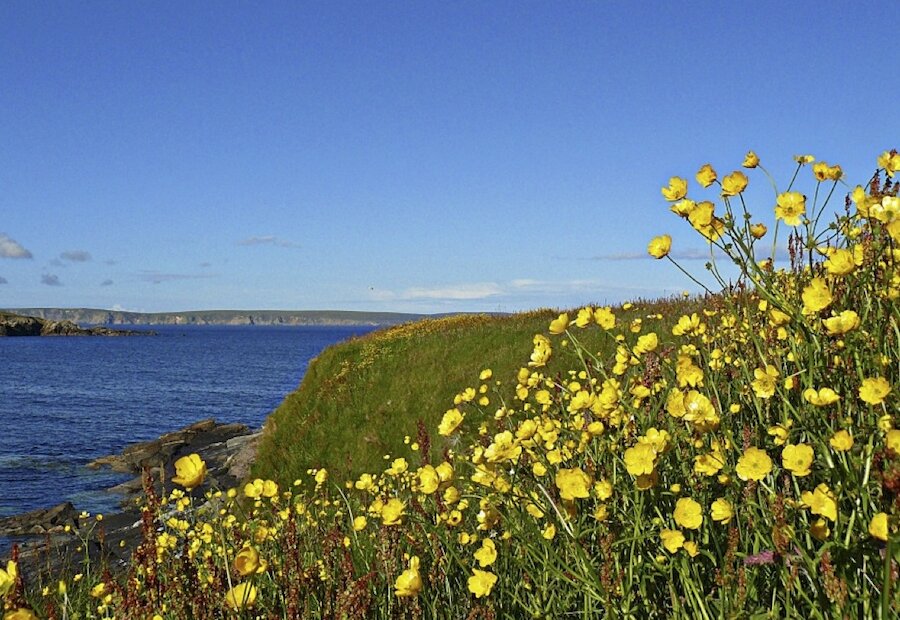Directions to start
Yell is accessible by inter-island ferry, and there is public transport available to the ferry terminal and on Yell itself. View the bus timetable.
This is a moderate walk of about 2 hours duration on which you may be lucky enough to see otters.

Yell is accessible by inter-island ferry, and there is public transport available to the ferry terminal and on Yell itself. View the bus timetable.
Commence walk at Aywick shop going down the road towards the sea. After crossing a grid (about 500 metres from shop) turn sharp left and follow the fence line to the shore. Go right along the fence to a gate which leads out to the grassy bank above the shore. Continuing along the coast you will pass through three more similar gates before reaching Salt Wick and the open moorland of Ness of Queyon.
A section of the ness known as ‘The Groin’ features quite high cliffs and care should be taken when walking near the edge.
A little over halfway into the walk you will come to the White Wife (OS HU 854 526). This rather striking and pious-looked memorial is the restored figurehead of the German cadet ship Bohus which was wrecked nearby on 26th April 1924 with the loss of 4 lives. Another couple of hundred metres brings the walker to a fence from which the sandy curve of Otterswick beach can be seen. Head uphill along the fence to a stile and from there follow the next fence round to a gate which leads out to the road-end. From there follow the road to the junction at the East Yell hall where ruins of the old Aywick School can been seen on your left next to the schoolhouse.
From this junction it is possible to make out the remains of the old ‘meal road’ which cut straight through the moor to Mid Yell. This is one of many such roads that were built during the potato famine of 1840 when destitute workers were paid in ‘meal’ (flour or oatmeal) rather than coin.
A three-quarters mile walk will now take you back to Aywick shop. Be sure to visit this amazing little emporium before heading home.